new posts in all blogs
Viewing: Blog Posts Tagged with: highlights foundation, Most Recent at Top [Help]
Results 1 - 25 of 25
How to use this Page
You are viewing the most recent posts tagged with the words: highlights foundation in the JacketFlap blog reader. What is a tag? Think of a tag as a keyword or category label. Tags can both help you find posts on JacketFlap.com as well as provide an easy way for you to "remember" and classify posts for later recall. Try adding a tag yourself by clicking "Add a tag" below a post's header. Scroll down through the list of Recent Posts in the left column and click on a post title that sounds interesting. You can view all posts from a specific blog by clicking the Blog name in the right column, or you can click a 'More Posts from this Blog' link in any individual post.
Some of you have been waiting patiently for this post. Sorry it took so long! I was a tad distracted (see my previous post).
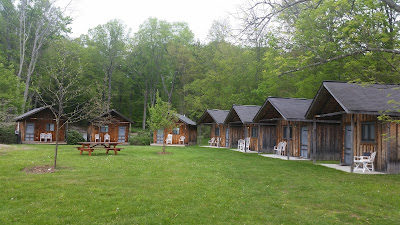 |
Some of the cabins at the Highlights Foundation.
Mine was the second from the left. |
In one word: magical.
In many more words: The entire experience inspired me, from the first Saturday gathering of 14 strangers (twelve attendees plus two faculty members) over wine and cheese to the last goodbye hugs with all my new friends on Wednesday. I couldn't imagine a more caring, encouraging group with which to share my first Highlights workshop. I'm honored to have spent time with these talented and creative people (many of whom already have books published!). By the last day, we felt like a family.
Yet I had a somewhat rocky start -- emails going astray for months, a cabin mix-up the day I arrived... There's always a story behind the story, right? Do you know what it's like to wander around a big rural campus in search of your name on a door, hoping to find it and not finding it? Agh!
The lovely
Jan Godown Annino (check out her wonderful blog) tried to help me solve my dilemma that first afternoon. I'm afraid I was (unintentionally) a little short with her. I'm a timid driver and I'd just spent three and a half hours driving on unfamiliar highways. Not my favorite thing to do. So I was a wee bit cranky when I arrived, only to find someone else in what was
supposed to be my cabin! Indeed, I almost felt Highlights didn't want me there.
Silly, I know.
Of course, all was not lost. The indomitable Jo Lloyd took charge and put all things right, finding my name sign and canvas welcome bag (containing the schedule, among other papers), and assigning me to a different cabin, which worked out perfectly. I fell in love with Cabin 9 and it became my home for 4 nights.
 |
| Cabin 9: my writing cabin and my sleeping, reading, and day-dreaming cabin |
 |
| Inside Cabin 9: rustic but charming, and always quiet. |
As we must do when confronted with unexpected situations, I adjusted my attitude and rediscovered my sense of humor (and I'm happy to say I became great friends with Jan Godown Annino!). That evening, I enjoyed meeting and getting to know all my talented fellow attendees, along with our fearless leaders, Kathy Erskine (author of the National Book Award-winning
Mockingbird, and of
Seeing Red, Badger Knight, and other novels, along with the upcoming verse novel
Hidden Power) and Alma Fullerton (author of verse novels
Libertad, which I reviewed here,
Burn, In the Garage, and others).
On the third day, we were joined by guest author Padma Venkatraman (I was excited to meet her because I'd already read all three of her novels, Climbing the Stairs, Island's End, and A Time to Dance).
By that third day, I'd had conversations with every single attendee, even the reticent (and gifted) Ray, the only male in our group. Ray's powerful picture book in verse moved us all to tears when he finally read it out loud at Group Critique.
Group critique every afternoon at 4 was followed by wine and cheese at 5:30 and then a delicious buffet dinner at the Barn.
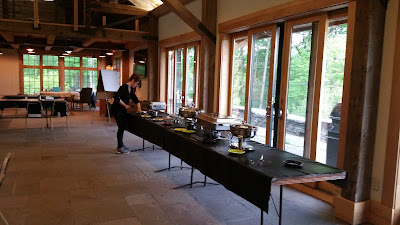 |
| Getting ready for dinner |
 |
| Wine and cheese time in the Barn! |
The food at the Highlights Foundation is worth the price of the workshops. It's true! Always fresh, local, and delicious, and prepared by the most talented chefs you'll find. They even take into account your dietary restrictions and bring you a special plate if needed. I'm sorry I didn't think to take more photos of the generous buffets. This one below is a simple lunch. There were always plenty of salad and veggie choices as well as comfort foods like lasagna. Ingredients were identified (writing with chalk on the black tablecloth: ingenious!) so you could avoid known allergens.
Eating this wonderful food made us all feel healthy-- and quite spoiled! No cooking, no clean-up. It's a writer's dream. Highlights even provided snacks and coffee, tea, or soft drinks in the Barn at any hour of the day or night, though I was usually too full to consider it.
When the rain finally blew away, we could play in the word garden:
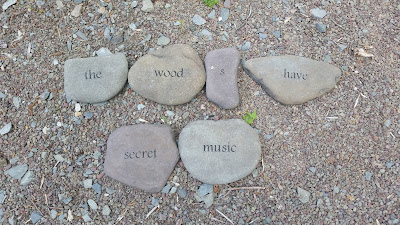 |
| An attempt at poetry |
or take a brisk evening walk, led by Kathy Erskine, a walk which helped jump-start my brain for more writing that night.
 |
| My writing desk and reading chair |
Our mornings were filled with informative workshops held in the classroom corner of the Barn. My favorite moments were mostly visual. I will never forget Kathy Erskine crawling around on the Barn's hard stone floor to demonstrate how she got into her character's head in the medieval tale, The Badger Knight, when Adrian hid under a pew at Carlisle Cathedral. And Alma telling us how she got into her character by huddling in a snow drift for hours with no coat or shoes. Wow! Talk about dedication.
After Padma joined us, she described binding up her leg for a day and trying to walk around. That was how she got inside her character in A Time to Dance, her moving verse novel about a dancer who loses one leg in an accident.
Our afternoons included plenty of free time to write. And write is what I did. Inspired by my one-on-ones with Alma and Kathy, I managed to write four new poems for my verse novel in the time I was there, and many more since I came home. From my one-on-ones and from comments in Group Critique, I learned that I need to flesh out the minor characters more and add some humor to what has turned out to be a serious MG contemporary novel.*
I came away with a renewed sense of purpose for my novel in verse and a sense of lasting camaraderie with an amazing group of people. I'm sorry I don't have people pictures, but check out the
Highlights Foundation site (at least, for now) and you may catch a glimpse of our group.
If you've never attended a Highlights Foundation workshop, please keep it in mind for the future. It's a must for any writer. And they do have scholarships. Just ask!
Personally, I can't wait to go back.
*Oh, you thought I was going to tell you what my novel is about? Sorry! That will have to wait.
Thank you, Highlights Foundation, for this generous prize. Your support of our writing community is so deeply appreciated by us and our readers.
Writing is only one part of what makes this community strong. Our community would exist without the generosity of your writing AND comments.
For this, we want to reward you by offering an incredible opportunity! This weekend, we aim to demonstrate our appreciation of this community with our second Commenting Challenge.

By
Deborah Hopkinsonfor
Cynthia Leitich Smith's
CynsationsWhat was your initial inspiration for writing Beatrix Potter and the Unfortunate Tale of a Borrowed Guinea Pig, illustrated by Charlotte Voake (Schwartz & Wade, 2016)?Actually, several years ago my agent,
Steven Malk, mentioned that it might be fun to do a book about
Beatrix Potter. After reading about her life (and enjoying the film
"Miss Potter"), I became fascinated by her story, accomplishments, and legacy.
My first attempts at writing a nonfiction book about her failed, however. But when I went back to try again, I hit upon focusing on one incident from her journal that illustrates her love of animals and of art.
The promotional copy describes the story as "mostly true." So this is historical fiction, yes? Where did you honor the Potter's actual life and where did you creatively extrapolate?It’s absolutely historical fiction! I do author visits at schools all over the country, and one of the first things students and I discuss is the distinction between nonfiction and historical fiction. I’ve been previewing the cover of Beatrix Potter and the Unfortunate Tale of a Borrowed Guinea Pig, and have found that even young children recognize that it’s a made up story (and slightly silly to boot).
In fact, some details in the story are based on fact, including the part where Beatrix borrowed from her neighbor a guinea pig named "Queen Elizabeth," which expired in the night from consuming a feast of paper, paste, and other scrumptious tidbits.
As I mention in the note, Beatrix was actually in her twenties when this occurred, but we have set the story when she was younger. The dialogue is invented also, although we do include several excerpts from her journal in the book.
I’ve included an author’s note of her life that also explains that the story is fictionalized.
What were other the challenges--research, craft, logistical and/or emotional--in bringing the story to life?One of the aspects of Beatrix’s own creative process I wanted to emulate was the “picture letter.” She originally got the idea for
The Tale of Peter Rabbit (1902) when writing a get well note to a young boy in the format of a letter that included spot art illustrations. I wanted to make this book a sort of picture letter itself.
Working with Charlotte Voake’s delightful illustrations, the amazing team editorial team of Anne Schwartz and Lee Wade (Schwartz & Wade) were able to capture that feeling for the book. For instance, even before you get to the title page, there is a spread that begins, “My Dear Reader…” which shows a hand penning the words. At the end, the story is signed by me and the author’s note is in the form of a postscript.
I’m always looking for ways that teachers and librarians can use books with students, and I think that, in addition to being an author and illustrator children enjoy, Beatrix Potter is a model for someone who began working on her craft as a child.
How did Charlotte Voake's illustrations enhance your text?Charlotte’s work is absolutely perfect for this story! I love her illustrations of Beatrix’s pets, which are filled with wry humor.
Charlotte is British, and we’re excited that her British publisher, Walker, will be publishing the book in Great Britain in July to coincide with the 150th anniversary celebration of Beatrix Potter’s birth.
(This anniversary is, as you can imagine, rather a big deal in England, and the Royal Mint is even issuing special commemorative coins.)
What other new releases should your readers be sure to check out in 2016?As it happens, 2016 is also the 150th anniversary of the founding of the
ASPCA in April 1866. And this April I’m excited that my new historical fiction middle grade novel,
A Bandit’s Tale, The Muddled Misadventures of a Pickpocket, will be out from Knopf.
It’s set in New York City, and is narrated by a young Italian immigrant brought over to be a street musician. It also features appearances by actual historical figures involved with improving the rights of children and animals, including Jacob Riis and
ASPCA founder Henry Bergh.
What advice do you have for fellow writers about historical research and blending facts with fiction?In October 2016, I’ll be teaching a
Highlights Foundation workshop (with
Pamela Turner) on writing nonfiction for middle grade students. I taught this class last year, and one of our main discussion points was how to know when a project can -- or should be -- fiction or nonfiction.
I’ve always been a huge fan of both genres, and enjoy writing about the same historical periods in different ways. My first long work of nonfiction,
Shutting out the Sky, Life in the Tenements of New York (Scholastic, 2003), came about because I had written a Dear America historical fiction book (
Hear My Sorrow (Scholastic, 2004)) about the Triangle Waist Company fire. In A Bandit’s Tale, I am returning to the same setting but telling the story in a picaresque style.
I think the main point whether one is writing historical fiction or nonfiction is that the piece must work as a dramatic, compelling story. This sometimes means including less research than one might like – but, then, you never know when you might use it again.
Cynsational NotesDeborah Hopkinson lives near Portland, Oregon. Follow her on Twitter
@deborahopkinson.
Author/illustrator Val Jones's first picture book, Who Wants Broccoli? was released earlier this month. She tells us about her path to publication in today's Author Spotlight post.
Announcing the winner of our second Commenting Challenge!
Are you ready for our second Commenting Challenge? Check out this prize from the Highlights Foundation! 
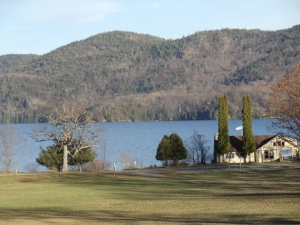
Photo by Vicky Lorencen
Silver Bay, Adirondak Mountains in Lake George, NY
Studying the menu at a new restaurant can be tantalizing. You scan the appetizers: olive tapenade, baked brie and calamari, then peruse the main course options: lamb chops, tilapia, steak medallions, and finally the scrumptious desserts: peach pie, crème brulee or chocolate lava cake. So many choices. Sometimes it helps to ask your server for a recommendations.
Well, my charming writerly friends, I have a different menu of options to tempt you. I can personally attest to the high quality and value of each. You simply cannot make a bad choice (unlike that unfortunate experience with the ahi tuna sushi special. Sorry to bring that up again. Ew.). Any one of these will nourish your writing skills and expand your network (without expanding your waistband!) Because you can click the links to get all of the particulars, I’ll focus on my personal experience with each.
Highlights Foundation
Whether you write picture books, novels or non-fiction, you will find an outstanding collection of workshops with top-notch faculty hosted in the gorgeous natural surroundings of Pennsylvania. The Highlights team will treat you like gold and feed you like royalty. Presenters take a personal interest in your work and the small workshop sizes allow you to get to know the other participants and learn from them as well. Workshops are pricey, especially if you need to fly, but Highlights does offer scholarships, free shuttle service and makes the experience all-inclusive, so there are no extras to worry about beyond getting there. I loved it!
Vermont College of Fine Arts
You probably already know about VCFA’s two-year low residency MFA program. But do you know there are also weekend workshops? What made this workshop a standout for me was the exuberantly positive atmosphere. The faculty–simply fabulous too. Truly. I came away feeling pretty darn giddy. I’m going again later this month and I can’t wait!
Falling Leaves/Green Leaves Master Class Retreats
Hosted by the Eastern New York Chapter of the Society of Children’s Book Authors and Illustrators, these fall and spring weekends take place on magical Silver Bay in Lake George, New York. This retreat has an amazing participant:presenter ratio–35:5. It’s no surprise, spots fill quickly. This workshop will stretch you and give you a boost.
UCLA Extension Writers’ Program
This online program pairs you with an instructor and a small group of students. I took a course called “Creating Memorable Characters,” which included textbooks and novels to read, as well as the expected homework. Interacting with the instructor and with the other students who were from all over the planet made this course especially fun.
I’ll give you a moment to look over the menu. If you have any questions, please let me know. I’m happy to serve you. Bon appetit!
Hors d’oeuvres have always had a pathetic interest for me. They remind me of one’s childhood that one goes through wondering what the next course will be like–and during the rest of the menu one wishes one had eaten more of the hors d’oeuvres. ~ H.H. Munro



By Leslie Helakoski
Boyds Mills Press
While we’re still knee-deep in winter, it helps to have something GREAT to look forward to. Here’s what I high-as-a-snowbank highly recommend . . .
Children’s book author Darcy Pattison and children’s book author/illustrator Leslie Helakoski will co-lead a unique workshop, PB&J: Picture Books and All That Jazz at Highlight’s Foundation in Honesdale, PA on April 23-26, 2015. Join them and learn how to make your story rise above the fierce competition.
For a taste of what’s to come at the PB&J workshop, here’s a wisdom-filled article written by Darcy and Leslie . . .
When people think about writing a children’s picture book, clichéd topics pop up. These classic themes are based on universal childhood experiences. It’s not that these topics are taboo. Instead, they are so common that competition is fierce. As they say, children’s publishing is a bunny-eat-bunny world.
Here are the top 9 topics to avoid. Also listed is a children’s book, published within the last 5 years, that is a fresh take on the topic. If you are considering writing a picture book about one of these topics, it will be a harder sale unless you can find an original way to approach it.
1. First Day of School. Everyone wants to get kids ready for the first day of school, and it’s hard to find a fresh approach.
Updated title that works:
Dad’s First Day (July, 2015), written and illustrated by Mike Wohnoutka.
2. Tooth fairy. People have 32 teeth, and losing baby teeth in early elementary school is a universal experience. The tooth fairy often has a place in a family story, which makes it a perennial topic for a children’s book.
Updated title that works:
The Dinosaur Tooth Fairy (2013) by Martha Brockenbrough, illustrated by Israel Sanchez.
3. Christmas/Halloween. Major holidays are often the focus on children’s books.
Updated Titles that Work:
Christmas Parade (2012) written and illustrated by Sandra Boynton.
Smudge and the Book of Mistakes: A Christmas Story (2013), by Gloria Whelan, illustrated by Stephen Costanza.
4. Wanting a pet. From gerbils to dogs, cats to chinchillas—humans love their pets. It’s a natural topic for a children’s book.
Updated titles that work:
I Want a Dog: My Opinion Essay (2015) by Darcy Pattison, illustrated by Ewa O’Neill.
I Want a Cat: My Opinion Essay (2015) by Darcy Pattison, illustrated by Ewa O’Neill.
5. Dealing with a disability. With today’s cultural emphasis on diversity (#WeNeedDiversity), libraries are looking for stories with disabled characters.
Updated title that works:
My Three Best Friends and Me, Zulay (2015) by Cari Best, illustrated by Vanessa Brantley-Newton.
6. Visiting Grandma and Grandpa. Who buys books for children? Grandparents! And of course, grandparents want to encourage a close relationship with their grandchildren. Do this topic with humor and honest emotion and you’ll have a winner.
Updated titles that work:
How to Babysit a Grandpa (2012) by Jean Reagan, illustrated by Lee Wildish.
How to Babysit a Grandma (2014) by Jean Reagan, illustrated by Lee Wildish.
7. New baby in the family. Young children often have to move over and make room for a new sibling. Books helps them work through the complicated emotions when a new baby arrives
Updated title that works:
You Were the First (2013) by Patricia MacLachlan, illustrated by Stephanie Graegin.
8. Barnyard stories/rural nostalgia. The rural roots of America are ever-present in children’s books. One of the first things kids learn is the sounds made by farm animals. From there, chickens and pigs rule!
Updated title that works:
Big Pigs (2014), written and illustrated by Leslie Helakoski.
9. Bedtime stories. Kids who are read to become better readers. What better time to read than bedtime? And if the story ends on a quiet note that encourages the kids to go to sleep faster, parents will love you.
Updated title that works:
Goodnight, Goodnight Construction Site (2012) by Sherry Duskey Rinker, illustrated by Tom Lictenheld.
Not convinced that you should avoid these topics? Then put on your A-Game! Because the competition for children’s picture books about these topics is fierce. Yet, if you write a fantastic story about one of these topics, it might just become a classic.



By: Stacey Shubitz,
on 10/20/2014
Blog:
TWO WRITING TEACHERS
(
Login to Add to MyJacketFlap)
JacketFlap tags:
picture book,
art,
Lindsay Barrett George,
Eric Carle Museum of Picture Book Art,
Highlights Foundation,
Molly Bang,
E.B. Lewis,
whole book approach,
visual thinking strategies,
Add a tag
I spent a weekend in the woods learning about picture book art and design at a workshop led by educators from the Eric Carle Museum of Picture Book Art and the Highlights Foundation. 

By: Stacey Shubitz,
on 10/20/2014
Blog:
TWO WRITING TEACHERS
(
Login to Add to MyJacketFlap)
JacketFlap tags:
visual thinking strategies,
picture book,
art,
Lindsay Barrett George,
Eric Carle Museum of Picture Book Art,
Highlights Foundation,
Molly Bang,
E.B. Lewis,
whole book approach,
Add a tag
I spent a weekend in the woods learning about picture book art and design at a workshop led by educators from the Eric Carle Museum of Picture Book Art and the Highlights Foundation. 

By:
Nina Mata,
on 10/3/2014
Blog:
Beautifique
(
Login to Add to MyJacketFlap)
JacketFlap tags:
fall,
Illustrations,
highlights for children,
highlights magazine,
highlights foundation,
Nina Mata,
nina mata illustrations,
Life & Stuff,
beautifique studio,
highlights illustrator,
highlights illustrator workshop,
nina mata blog,
Add a tag
It’s been a great year so far. I can’t believe it’s fall already. So much has been happening in my camp lately it’s a bit too much to take it all in sometimes.
Highlights Illustrator Workshop
Last week I was invited to spend the weekend at the Highlights Foundation in Honesdale, PA for the Highlights Illustrator’s Workshop specifically for new for New Highlights Illustrators! From the moment we arrived till the weekend ended it was such a memorable and amazing experience.

I had the privilege of staying in the founders original home which was so beautiful, everything remained intact and well-preserved including the family library which had their collection of child psychology books from 1900′s. Pretty darn neat!


Most of the weekend activities were spent at The Barn, an open space specifically for workshop activities and dining…Oh! speaking of dining..the food was an absolute treat! There was something for everyone’s palette and most of the food was locally grown and organic. It was one of the most refreshing dining experiences I’ve ever experienced.



Now I’m to going to go into detail about the workshop itself just incase you are one of the newer artists that happen to stumble onto this blog looking for insights on what to expect at a Highlights Workshop. I’d like to keep you guessing and excited for whats waiting for you! But…if you are a bit more curious about the details of our weekend check out Rich Powell’s blog post about our weekend here. Just know that it’s an amazing time with a great group of people who share the same passion for children’s art as you do. The camaraderie you build in such a short amount of time is just outstanding and leaves such an impression.

I can’t say this enough, I had the most amazing time that a week later I’m still riding the Highlights high!

Wouldn't it be great to escape for a few days to just write? Oh, do I have a place for you! You won't have to cook a single meal, it's tranquil, there's wifi, AND it's affordable. 
By: Vicky L. Lorencen,
on 5/27/2014
Blog:
(
Login to Add to MyJacketFlap)
JacketFlap tags:
agents,
Revision,
literary agents,
Harold Underdown,
questions for agents,
Highlights Foundation,
Writing career,
Eileen Robinson,
agent/author relationship,
interviewing agents,
seeking representation,
Add a tag
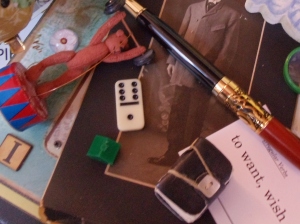
Photo by Vicky Lorencen
You’re right. I sound presumptuous. But I want to be ready when I get “the call” from a literary agent.
Right again. The call could be a long way off. But being prepared is smart. And besides, I love list-making.
Here’s why I think this preparation is important: it’s easy to focus on what an agent may expect and need from you. But an agent/client relationship, at its best, is designed to be a true business partnership. As an equal partner, you need to think about what you want and need from an agent too. (I shall not digress into tales of wah from eager author wannabes who closed their eyes, asked no questions and became human ankle bracelets for the first agent who expressed interest. You are far to dear and sensitive for such horror stories.)
And so, here’s a list of questions for you to consider as you do your agent homework.
Disclaimer: Please think of this list as a guideline. You’ll want to customize it to suit your style and situation. That’s what I did. Some of these questions are my own, but I also adapted questions from a list used by my generous friend Kelly Barson (who found a wonderful agent!). Also, keep in mind, you may find the answers to some of these questions online (like the answer to question 6). This will give you room to ask other questions instead.
Get your question list ready. Then you’ll be ready when the agent pops the question: do you have any questions for me? (Whoa. I feel dizzy. I wrote myself into a circle there.)
1. If you work within a house, would I be considered your client or a client of the house? (In other words, if the agent moves on, are you connected to that house or will you move with him/her?)
2. Do you offer a representation contract or a verbal agreement? (Some writers might be uncomfortable with formal contracts, while others would feel too vulnerable with a verbal agreement. You need to ask for what’s best for you.)
3. You’re basing a decision to represent me on one work. What if you don’t love the next project? Do you refuse to send it out? Do you try to find it a home anyway? Do I have the latitude to branch into another genre (e.g., from MG novels to picture books)?
4. What will my working relationship with the you look like?
5. How far do you typically go editorially? Do you request in-depth rewrites? A little tweaking? None at all?
6. Are you a member of AAR? (The Association of Author Representatives member agencies agree to abide by a code of ethics.)
7. How much communication do you provide? And how will you typically provide it–email, phone, telepathy? (Some agents only talk to you when there’s a deal to discuss or if there’s a problem brewing. They leave you alone to write. Others are more hands-on determining the next project, checking in during the writing process, giving feedback, updating on submissions, etc. You need to decide how much autonomy you want or if hand holding through the initial stages is exactly what you need.)
8. Will I be dropped if my work doesn’t sell right away or are you committed, no matter how long it takes? Is there a time limit? At what point would you ask me to move on to something else (or to someone else)?
9. What are your greatest strengths as an agent? (If you’re feeling brave–ask about weaknesses too, but be prepared to answer the same question yourself!)
10. Could you describe your ideal client?
BONUS NEWS . . .
Not quite ready to begin your agent search? Here’s a fabulous opportunity to learn the fine art of revision. You’ll know how to make your work as polished as possible before you start your hunt.
Revision Retreat 2014 with Harold Underdown and Eileen Robinson
In this working retreat, Harold Underdown and editor Eileen Robinson will teach proven techniques for self-editing and revising and work with writers on their manuscripts. Mornings will be dedicated to revision techniques and afternoons to model critique groups, individual meetings, and writing time.
Hurry! Spaces are limited to allow for individualized attention.
I would advise anyone who aspires to a writing career that before developing his talent he would be wise to develop a thick hide. ~ Harper Lee


Have you ever dreamed of having a group of people who would support and promote your books? Even go so far as purchase an entire first printing? Well, you can – if you write a book that accurately portrays farming or ranching. I discovered this when my book Farmer George Plants a Nation earned awards from several state Farm Bureaus, and then again when I attended the Writing About Agriculture Workshop at the
HighlightsFoundation this past weekend.
 Cris Peterson
Cris Peterson, dairy farmer and author of ten award-winning books about “the wonder of where food comes from” spoke with passion about the negative stereotypes that surround farming (think 'Green Acres') – “We’re the last great prejudice,” she says. And she’s out to squelch those stereotypes with picture books like
Century Farm,
Seed Soil Sun, and
Horse Power, the wonder of the Draft Horse. “It’s all about the wonder,” Cris says. She wants to create that “Wow, I didn’t know that!” reaction from her readers, so they feel connected to what they eat, wear, and use everyday.
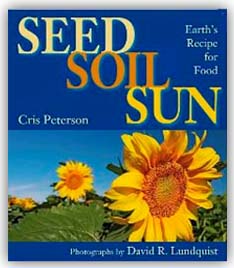
Ask the next child you see where their food comes from and they’ll probably say, “The grocery store.” Campbell’s Soup conducted a survey and discovered that 54% of the people they asked thought soup came from a factory. It's cooked and canned there, but what about those ingredients? The business of Agriculture – the growers (large and small), processors, distributors, researchers, and everyone involved wants kids and adults to know where food comes from and how it gets to their table. It’s a pressing need in this high-tech digital world where the amount of farmable land is shrinking and the population keeps growing.
I confessed my farm-faux-pas-near-miss in Farmer George when I wrote ‘pushed the plow’. Fortunately, the gaff was caught before printing and we changed it to “guide the plow.” It may seem like a silly thing to someone who has never tilled a field, but it’s serious business for those who have. They’re tired of picture books that show farmers in overalls milking a cow by hand, or pigs wallowing in the mud. That was then, but high-tech dairies with rotating carousels, and clean pigs are now.
Leading the cheering section for great Ag books is Kevin Daugherty the Education Director at Illinois
Agriculture in the Classroom. He spoke with such enthusiasm about how he and his staff actively seek out books that portray Ag in a positive light, and when he finds one, he purchases it to give to teachers throughout the state, along with lesson plans, activities and so much more. And it’s not just Illinois. Every state is eager for books that connect children to their food and fiber. The goal is to help educators teach writing, reading, science, history and math through agriculture.
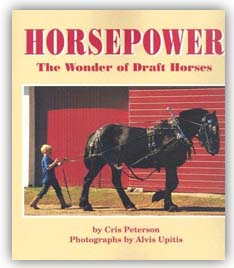
So, wondering what to write about? Think about agriculture and all of its possibilities. But -- Do your research whether it’s fiction or nonfiction, so you too, can have Kevin and all the folks like him support and promote your exciting, enlightening, and ACCURATE book about Agriculture.
Just a few great Ag books to check out:
Picture Books:
Apples to Oregon by Deborah Hopkinson
Extra Cheese, Please! By Cris Peterson
Fantastic Farm Machines by Cris Peterson
Harvest Year by Cris Peterson
The Scrambled States of America by Laurie Keller
A Handful of Dirt by Raymond Bial
Novels:
A Season of Gifts by Richard Peck
Little Joe by Sandra Neil Wallace
The Beef Princess of Practical County by Michelle Houts
Return to Sender by Julia Alvarez
Just Your Average Princess by Kristina Springer

By: Kathy Temean,
on 12/9/2012
Blog:
Writing and Illustrating
(
Login to Add to MyJacketFlap)
JacketFlap tags:
Author,
Events,
poetry,
writing,
authors and illustrators,
How to,
Highlights Foundation,
Poetry Workshop,
Conferences and Workshops,
David L Harrison,
Add a tag
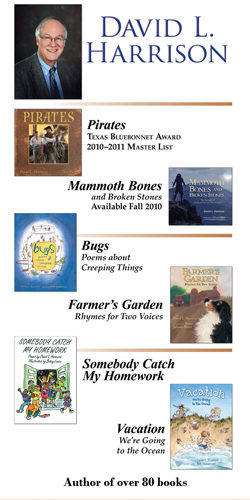 Some of you might remember David Harrison from the New Jersey Annual Summer Conference. He was the keynote speaker in 2010 and also did an Intensive and a number of workshops to help our members.
Some of you might remember David Harrison from the New Jersey Annual Summer Conference. He was the keynote speaker in 2010 and also did an Intensive and a number of workshops to help our members.
Well, David is conducting a Poetry workshop this coming year for the Highlights Foundation. I am letting you know this early, because the space is limited and you might not get a spot if you wait.
If you decide to attend, I can let you know that David is extremely helpful in giving his time and expertise to other writers and he is very saavy about social media and new technology.
You can visit his website at: www.davidlharrison.com or his blog dedicated to poetry: www.davidlharrison.wordpress.com
Here is the information about how the workshop 5 -day layout and what you will learn.
Highlights Foundation
Poetry for the Delight of It
Workshop Description
Date: September 28 – October 3, 2013
Arrive Saturday, September 28, at 3:P.M. for a tour of HIGHLIGHTS FOR CHILDREN and Boyds Mills Press. Ends Thursday, October 3, after lunch.
Designed For: From budding poet to published veteran, we learn and teach at every stage. If you like to think, talk, write, and share poetry, this one’s for you.
Limited participants
Group activities:
- Four key workshops:
- Conceiving ideas for poems
- Rough drafting
- Revising & Rewriting
- Tips on marketing
- Discuss and practice poetic techniques
- Verse and free verse: pros and cons
- Become better readers of our work
- Learn what to look for in good/bad poetry
- Become better critics of our work
- Meet and hear special guests
Individual activities will include time to:
- Practice writing what you’re learning
- Be still with your thoughts
- Start something new
- Meet one-on-one with your workshop leader
- Have your work critiqued by your workshop leader
- Fun, impromptu gatherings to share poems
- Chance to learn from others
What you will accomplish:
- Write poems
- Practice fundamental elements of poetry
- Return home excited about the new poems you will write
What we will accomplish:
- Make you a better poet
- Create a community of poets
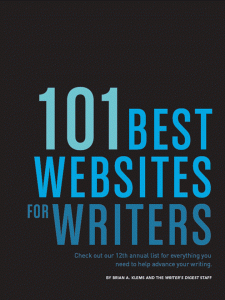
IT IS TIME TO NOMINATE WRITING AND ILLUSTRATING www.kathytemean.wordpress.com for the WRITER’S DIGEST’S 101 BEST WEBSITES FOR WRITERS!
If you have enjoyed the articles and information you received everyday this year, please help by dominating my blog. Submit an email to [email protected] to nominate my blog www.kathytemean.wordpress.com
I would greatly appreciate your help.
Thanks!
Talk tomorrow,
Kathy
Filed under:
Author,
authors and illustrators,
Conferences and Workshops,
Events,
How to,
poetry,
writing Tagged:
David L Harrison,
Highlights Foundation,
Poetry Workshop 


By:
Betsy Bird,
on 9/26/2012
Blog:
A Fuse #8 Production
(
Login to Add to MyJacketFlap)
JacketFlap tags:
Highlights Foundation,
Yom Kippur,
Joan Aiken,
Chad Beckerman,
Children's Literary Salon,
Little Free Library,
Patti Lee Gauch,
abecedarian delights,
antiquarians (not to be confused with anti-aquariums),
Uncategorized,
Rosh Hashanah,
Add a tag
 Let’s start off with the me stuff since it’s quick. First and foremost, if you’ve thought to yourself, “Boy, I’d really like to watch Betsy talk about the Core Curriculum and then mention all the 2012 nonfiction books for kids she really likes and why they stand out,” you are in SUCH luck. The Highlights Foundation is hosting the Books That Rise Above workshop. Attend and you’ll hear folks like Patti Lee Gauch, Linda Sue Park, Leonard Marcus, Deborah Heiligman, and an alliterative librarian/blogger. And yes, I do know all that Core Curriculum stuff now. And boy, it’s a doozy.
Let’s start off with the me stuff since it’s quick. First and foremost, if you’ve thought to yourself, “Boy, I’d really like to watch Betsy talk about the Core Curriculum and then mention all the 2012 nonfiction books for kids she really likes and why they stand out,” you are in SUCH luck. The Highlights Foundation is hosting the Books That Rise Above workshop. Attend and you’ll hear folks like Patti Lee Gauch, Linda Sue Park, Leonard Marcus, Deborah Heiligman, and an alliterative librarian/blogger. And yes, I do know all that Core Curriculum stuff now. And boy, it’s a doozy.
- Speaking of Patti Lee Gauch and myself, the great editor visited NYPL the other day and spoke at my Children’s Literary Salon. SLJ covered the event as well. And the woman, if I do say so myself, was an undeniable hit.
- Finally, there’s a lovely Joan Aiken event coming up celebrating the 50th anniversary of The Wolves of Willoughby Chase. I’m going to be a part of it (you can see me mentioned here as the “& more”. Very very exciting stuff.
- “So, to introduce 3- to 6-year-olds to the notion that there’s an inevitability to death . . . “ Is there anything better than a good Marjorie Ingalls Tablet piece? With Yom Kippur present and accounted for I’m grateful for Ms. Ingalls article on introducing kids to death with books, as mentioned in her piece Don’t Fear the Reaper. As for Rosh Hashanah and atonement, check out her Teaching Kids to Apologize. You can tell she doesn’t write her own titles for her written pieces, can’t you?
- The Caldecott blog Calling Caldecott is up and running yet again, which is fantastic. I couldn’t be more pleased to see them discussing works of photography as well. Does my creaky old photography loving heart good, it does. Plus Robin Smith gets extra points for ending her post with, “I hope the committee will step gently out of the box and consider this one.” BOOM! That’s how you do it, folks!
 Photography is no stranger to designer Chad Beckerman. It was through his site Mishaps and Adventures that I learned about Abrams cool new abecedarian fun. To quote: “We over here at ABRAMS KIDS have started a campaign on Instagram and Twitter called A for ABRAMS ( #aforabrams ) We are collecting A’s that are artful, well designed, or just plain cool from anywhere that you might find them. The idea is whenever you happen to see one of these artful A’s out and about you can join us by hash tagging your A #aforabrams as well as including our Instagram or twitter handle @abramskids or @abramsbooks. Have some fun and we hope you all get to see the world around you a little better.” Head on over to Chad’s blog to see a whole smattering of fine and fancy A’s.
Photography is no stranger to designer Chad Beckerman. It was through his site Mishaps and Adventures that I learned about Abrams cool new abecedarian fun. To quote: “We over here at ABRAMS KIDS have started a campaign on Instagram and Twitter called A for ABRAMS ( #aforabrams ) We are collecting A’s that are artful, well designed, or just plain cool from anywhere that you might find them. The idea is whenever you happen to see one of these artful A’s out and about you can join us by hash tagging your A #aforabrams as well as including our Instagram or twitter handle @abramskids or @abramsbooks. Have some fun and we hope you all get to see the world around you a little better.” Head on over to Chad’s blog to see a whole smattering of fine and fancy A’s.
- Now let’s see what those crazy Antiquarians are up to. I admit that I don’t make it out to Antiquarian events as often as I’d like. That’s why it pleases me to see the following: “The bicentennial exhibition, ‘In Pursuit of a Vision,’ consisting of 150 items from the collections of the American Antiquarian Society (including some 35 children’s books) is now on display at the Grolier Club, 47 E. 60th St., New York. The exhibition is free and open to the public Mondays through Saturdays, 10 a.m.-5 p.m. until November 17, with the exception of Columbus Day, Oct. 8.” The exhibition was reviewed in the Sept. 12 edition of the New York Times and the American children’s books on display range from James Janeway’s Token for Children (1700) to the McLoughlin Bros. picture books and artwork produced in the late nineteenth century.
- Who are Britain’s Top Ten Children’s Literature Superstars? No, this isn’t a reality show competition (images of Philip Pullman balancing a pie plate on his chin suddenly pop uninvited into my head). The Independent has presented such a list and we are free to act very American and say, “Who is that?” Many is the Yank who would say those words when confronted with Jacqueline Wilson, Alan Garner, and Enid Blyton (Famous Five, famous schmive). Tolkien, Pratchett, and Gaiman need not apply apparently. Zoe Toft wondered who the American Top Ten Children’s Literature Superstars would be. I’m sure we all have our own lists, but I guess I’d have to go with Maurice Sendak, Eric Carle, E.B. White, Madeleine L’Engle . . . um . . . help me out here, people. Thanks to Playing By the Book for the link.
- Daily Image:

Until Alison Morris introduced them to me, I was unaware of the delight that was the Little Free Library system. You can read the New York Times article about them here. Basically they’re these adorable little boxes that you can fill with free books for folks to take. So for those of you with too many galleys in a given year, voila! Your solution. Here are some particularly cute ones (I like the prominent Going Bovine in the first):




Thanks to Alison Morris for the links!

By: Hazel Mitchell,
on 9/25/2012
Blog:
Hazel Mitchell
(
Login to Add to MyJacketFlap)
JacketFlap tags:
Neal Porter,
Hazel Mitchell,
Boyds Mill,
writing retreat,
illustration,
workshops,
David Wiesner,
Donna Jo Napoli,
Eric Rohmann,
Ruth Sanderson,
highlights foundation,
Floyd Cooper,
Kelly Murphy,
Add a tag
I promised a little run down on my recent visit to Highlight's Foundation in Boyd's Mill, PA. It puts the TREAT in RETREAT. Here's one reason ...
and here's another ...
Just in case we were feeling faint they fed us 3-4 times a day. And in between we were welcome to raid the pantry ... yee gads! Thankfully, all the top-notch food is locally sourced, cooked with care and healthfully. Which is good, because you wouldn't want to miss
any of it! Especially 'Angel Poop' .. my fav dessert.
But there's more to Highlights than just good grub. If you've no idea what I'm talking about, here's a link to their
website. They run fabby writing and illustrating workshops for the kidlit world at a wonderful facility in Pennsylvania. Highlights is allied to Boyd's Mill Publishers in Honesdale and the first day includes a tour if you get there a little early. Which I did. A day early because of flights (which they don't charge you for). I was collected from Scranton airport by a very nice chap called Bob. All the staff are very welcoming and helpful. It's a bit like being at a private country club for children's writers and artists, but with no boring golf or rubbish conversation at the bar.)
at Boyd's Mill ... some place to have your office ...
The Barn, where all workshops and meals take place. It's a beautiful building and very welcoming, with informal rooms to lounge around in and a big space for work and eating. Some nights we ate on the patio.
Attendees get to stay in cute little private cabins ... but I got to stay in the farmhouse, which I loved!
The workshop I attended (Advanced Children's Illustrators) had a great faculty - Eric Rohmann - Ruth Sanderson - Kelly Murphy - Floyd Cooper ... plus guests including Neal Porter (Roaring Brook Press), David Wiesner, Donna-Jo Napoli. During the week, staff and editors from Boyd's Mill popped in and shared mealtimes with us, which was very nice and friendly.
Days start early with coffee at 7.30am, followed by breakfast (and 2nd breakfast if you want it!) then workshops at 9am until .... you want to stop in the evening. It was great to have several days to experiment, the wonderful atmosphere and secluded surroundings of the foundation make it a pleasure. After a day your fellow attendees feel like family. The everyday world is a memory.
I wanted for nothing while I was there. Wifi is available most everywhere (phone service is a little squiffy, but there are house phones you can use a calling card on, or get folks to call you back). If there is anything you need - then you just have to ask. Did I say I worshiped the kitchen staff ...?
There is nothing, however, to top sitting down with seasoned professionals and listen to their experiences, chat around the dinner table or next to the outdoor fireplace and hear about experiences on a personal level. With only 24 or so attendees it was great to really get to know each other in intimate surroundings.
If you are looking for a different experience from the usual hurly-burly of the conference circuit, I suggest you give Highlights a try. The cost of the workshops are truly reasonable given the level of attention and accommodation. They also offer scholarships to those who qualify.
I leave you with some photos as they speak more eloquently than I ...
David Wiesner
Neal Porter
Eric Rohmann
Eric was my mentor for the workshop! Lucky me!
Kelly Murphy
Faculty Panel
Portfolio Showcase
Toodles!
Hazel

By: Kathy Temean,
on 3/12/2012
Blog:
Writing and Illustrating
(
Login to Add to MyJacketFlap)
JacketFlap tags:
article,
Highlights Foundation,
Grant money,
Leslie Zampetti,
SCBWI Grants,
Grant Application Tips,
Tips,
writing,
Advice,
Add a tag
 A while back I asked Leslie Zampetti to write an article that could help writers and illustrators apply for grants. Today Leslie got the job done. I am hoping that it will help you tackle the opportunity that grants provide.
A while back I asked Leslie Zampetti to write an article that could help writers and illustrators apply for grants. Today Leslie got the job done. I am hoping that it will help you tackle the opportunity that grants provide.
Here’s Leslie:
Many writers are intimidated by the process of applying for a grant or award, but really, it’s not that different from submitting work for publication. Too, while winning an award or grant is fabulous, the process of applying itself can improve your writing and bring it to a new level.
Step 1: Research.
Just like submitting to an agent, editor, or publisher, do your homework. Carefully read the application announcement, and make sure your writing fits the requirements for the grant. Check out previous winners’ work when possible. Add the application deadline to your calendar and see how it fits into your usual schedule. Most importantly, take the risk! Don’t talk yourself out of applying. A good friend pushed me to apply for a scholarship to the Highlights Foundation Children’s Writers Workshop in Chautauqua, NY last year whenI felt that others might be more economically deserving. Well, we were both right. I didn’t win a full scholarship – but I did win a partial grant. And I had an amazing workshop experience that has profoundly affected my writing!
Step 2: Choose your piece.
Nearly all grants require a writing sample. Make sure your piece fits the purposes of the grant and its requirements, such as word count, genre, etc. You may find you need to rework a piece or even write something new. Give yourself plenty of time to get feedback and critiques – both on the sample itself and on the application. As with all writing, revision is the name of the game.
Your critique group is a great place to start to get help. I have a few trusted colleagues and friends that I like to ask, outside of my critique group. Often they have a different viewpoint, being less familiar with my current work. Remember, being eternally grateful for help is good, but returning the favor is even better.
Step 3: Practice makes perfect.
It’s tempting to reuse a biographical note or a writing sample, especially if it’s worked before. But this is a great opportunity to practice those marketing skills: writing a synopsis, creating a pitch, developing your profile. Even if you don’t start from scratch, see if you can surprise yourself. Many applications require you to answer specific questions; you can use those as a starting point just as you would a writing prompt.
Step 4: Follow the directions.
Before you begin filling out an actual application, read the directions. Several times. If you’ve questions, contact the the sponsoring organization and get answers or ask a fellow writer who’s applied for the same grant. Make sure every piece of your application fits the requirements. This is not the time to get creative with fonts, spacing, margins, etc. If submission requirements aren’t specified, format your writing as you would a piece for publication: double-spacing, Times New Roman (preferably 12 point), at least one inch margins.
Make sure that when you put your application together that you’ve followed all instructions correctly, including the order in which items are collated, how many copies to be submitted, whether your name appears on the sample or not. Ask a close friend who’s not already familiar with your application to check it – they’ll be less concerned with the quality of your writing and more likely to notice the tiny details, such as whether your pages are
I admit that the last few weeks since Christmas I have been feeling a bit jaded. Not sure if it was the holidays, the weather or just non-stop work. Maybe all three. All I know is that the urge to pick up a pencil/pen/brush can disappear and the batteries need to naturally recharge. After a bit the 'itch' starts and you can feel your finger tips twitch and ideas starting to trickle through, (just when you thought you would never have another).
What came out was black and white drawings. This tall, tall house first, (initially I thought I'd sketch a couple of kids watching the snow through window). I use pencil and add shading in photoshop. When I'm doing something like this I try to stop thinking and enjoy the process. When left to it's own devices my brain likes to do lots of detail and squiggles and such.
I was having so much fun I went on to draw some characters, keeping them pretty loose and free.
These will be good to send to the SCBWI bulletin.
It was fun to draw some older characters for a change.
This little girl is loosely based on a friend's grandaughter who is always full of jumping beans!
When I wasn't drawing I have been working on the marketing for 'Hidden New Jersey'. I emailed press releases to a gazillion newspapers/radio/tv contacts in NJ, as well as to my local contacts. Hoping to have a little launch at my local book store in Feb/March. And next week starts a blog tour, so I'll be posting those links ... some of the bloggers are doing giveaways too, so stay tuned!
Also excited to have been accepted into the Highlight's Foundation Workshop for Advanced Illustrators in PA. That's not until September though, so aways to go yet.
Big news of the week was the ALA awards. My favorite winner wa
WOW: Welcome, Alison, to The Muffin. We are so happy to have you here today to talk about the Highlights Foundation! Can you briefly describe for us the Highlights Foundation and its purpose or mission?Alison: The Highlights Foundation believes that children deserve excellent stories. These stories start in the minds of our authors and illustrators. We give our guests a place to shape their stories, to improve upon them, to seek guidance from the best, and to connect with others who share the same passion.
WOW: I'm sure all children's writers are currently drooling over that description. Your mission sounds absolutely fantastic! How does it differ from Highlights for Children magazine? Alison: The Highlights Foundation is a separate entity from Highlights Inc. We are a non-profit, and as such, we have many supporters of our mission. Highlights Inc. has been very generous with the Foundation’s needs. Our executive director, Kent L. Brown Jr., is a descendant of the founders of
Highlights for Children, Garry and Caroline Myers. Kent worked his way to editor-in-chief of the magazine and then created Boyds Mills Press publishing house, along with its subsidiaries. As a prominent figure in the industry, Kent saw a need. Now as editor, chief emeritus, and publisher at large, Kent is able to dedicate his time to the causes of the Foundation.
WOW: Thank you for clearing that up. What are Founders Workshops? What topics do they cover? Where are they located?Alison: The Founders Workshops are located at the homeplace of the founders of
Highlights for Children, Garry and Caroline Myers, in the picturesque mountains of northeastern Pennsylvania. We find the publishing industry’s best writers, editors, and illustrators to teach Founders’ Workshops and only those who are proven mentors, willing and able to help writers and illustrators meet their goals. Our workshops range from weekend retreats about such things as establishing meaningful conflicts to week long workshops on topics like writing your first novel. We take special pleasure in fussing over our guests by offering gourmet food and cozy cabins (pictured above) for relaxation during—and after—a day of learning and writing.
WOW: Gourmet food and writing! You can't get much better than that. How do you find a schedule of the workshops and sign up to attend?Alison: The best place to find information about our offerings is on our website,
www.highlightsfoundation.org. You can also contact Jo Lloyd at the Highlights Foundation. She'd be happy to send you a brochure with details about our Founders Workshops and our annual Writers Workshop at the Chautauqua Institute. Just call her at 570-253-1080.
We are also excited about our Founders Facebook page, where we promote our offerings, give writing tips from our faculty, and share highlights of workshops and events that take place at the homeplace. You can link to our Facebook page from the URL above.
WOW: Sounds easy! Who teaches these workshops?Alison: Our faculty is varied: editors, authors, illustrators, and professors. The one common thread among them is that they are the best in the business. Who wouldn't feel like sitting down to an intimate dinner of eight
By:
Donna Earnhardt,
on 1/31/2011
Blog:
WORDS
(
Login to Add to MyJacketFlap)
JacketFlap tags:
writing for children,
writing workshops,
jr.,
Highlights for Children,
Chautauqua,
Highlights Foundation,
scholarships,
Chautauqua Institution,
Highlight Foundation Workshops,
Kent L. Brown,
Add a tag
“Chautauqua.” I could hear my hubby saying the word in the other room…but couldn’t figure out why. “What was that?” “Chautauqua…” he repeated. “WHAT ABOUT IT?” I was in the other room trying to tweet, work on some networking and hear … Continue reading →
You may have just written the next greatest novel in the world, but if no one has ever heard about it, no one will ever read it.
It is a common misconception that once your book is written and published it’s all downhill from there. This is hardly ever true. In fact, for most writers, this is where the hardest work begins. You, as a writer, love to write, feel comfortable spending many hours alone behind your computer. But after completing that novel, it’s time to take a step away from your desk and show your smiling face to the public.
Book SigningsBook signings are a great way to get your name and your book out into the public. Unless you are already well-known and have customers and fans lining up to buy your book, it’s unlikely that a book signing will generate a lot of money. Money, however, is not the sole purpose of a book signing. Signings are a cheap and easy way to promote yourself and your book. They most often happen at bookstores, but could be hosted by many other venues.
School VisitsIf your books are appropriate for school age children, consider speaking in schools, running workshops for students, or just asking a school to host a book signing. This is another great way to promote yourself and your book. You can begin by volunteering to speak to students at your alma mater. If this visit is successful, your name will travel by word-of-mouth to other educators and school districts and you will soon have several visits under your belt.
Library visits, for schools or public libraries, are another useful option.
If your book is not appropriate for school-age children, you could contact your college or local colleges about setting up an event or book signing.
Community ForumsOther places to consider speaking are local community groups such as Rotary. Also consider audiences specific to your book. For example, did you write about book about giraffes? Perhaps you could speak or sign at a local zoo. Write a book about a boy who loves baseball? You could contact the president of your local little league association about hosting an event for the little leaguers.
Highlights Foundation hosts a workshop entitled Life in the Spotlight: Author Opportunities after Publication, which “introduces the participants to publicity techniques and the fine points needed to create fruitful relationships with the media, but it offers instruction, practice, and a real-life school experience for each enrollee in the development of public speaking and presentation skills.” Having extra guidance in a workshop like this one as well as the support of other published writers goes a long way.
You are a writer, you are creative. Put some of your creative energy into motion by setting up events to promote yourself and your book.
How have you creatively promoted your writing?
by: Anne Greenawalt (http://www.annegreenawalt.com/)
 Thought I'd send this news along to those of you who have a completed a draft recently and are serious about revision. These workshops are a tad expensive, but they offer terrific one-on-one help for getting your novel ready to publish. Plus, I can't imagine a better time to be at the Highlights Foundation farm in Pennsylvania--the fall is beautiful there!
Thought I'd send this news along to those of you who have a completed a draft recently and are serious about revision. These workshops are a tad expensive, but they offer terrific one-on-one help for getting your novel ready to publish. Plus, I can't imagine a better time to be at the Highlights Foundation farm in Pennsylvania--the fall is beautiful there!
This fall, the
Highlights Foundation features two Whole Novel Workshops for serious, committed, emerging novel writers. These workshops take place near Boyds Mills, Pennsylvania, at the homeplace of the Founders of Highlights for Children. They are led by award-winning novelists who are also experienced writing instructors.
Our novel mentorship programs include
• focused one-on-one response to your entire novel in progress from an accomplished author and teacher;
• group critiques;
• seminars on technique and craft; and
• ample time to write and revise in a private, rustic cabin.
Specifically designed for writers of middle-grade and young-adult novels, the Whole Novel Workshop (November 6–13, 2010) offers the one-on-one attention to be found in degree programs, but without additional academic requirements, lengthy time commitments, or prohibitive financial investments. This unique program focuses on a specific work in progress, moving a novel to the next level, in preparation for submission to agents or publishers. (Led by National Book Award finalist and Newbery honor recipient Carolyn Coman and Martine Leavitt, finalist for the Governor General’s Award and the National Book Award.)
This workshop is limited to eight participants. Applications will be accepted July 13–August 1, 2010. To request an application, contact Jo Lloyd at 570-253-1192 or e-mail
[email protected]. You will be notified of acceptance status by August 15, 2010.
Like the Whole Novel Workshop, the Whole Novel Workshop for Historical Writers (November 13–20, 2010) helps you ready your work for submission. You’ll learn what sets the historical novel apart from its close cousin, the contemporary novel, and delve into character, plot, setting, voice, dialogue, action, and emotion. But you’ll also learn to augment your writer’s toolbox in order to transport your readers to another time and place. (Led by Liza Ketchum, whose fifteen books for young people include Massachusetts Book Award winners Newsgirl and Where the Great Hawk Flies, and Ellen Levine, author of twenty books for young people, many of which have garnered major awards.)
This workshop is limited to eight participants. Applications will be accepted August 5–August 20, 2010. To request an application, contact Jo Lloyd at 570-253-1192 or e-mail
[email protected]. You will be notified of acceptance status by September 10, 2010.
 Highlights Foundation's website is a great resource for writers. In addition to the wonderful workshops they offer, you will find a whole library of writing tips given at previous Highlights Foundation Writers Workshop at Chautauqua. You can search the archives by topic, author, or title.
Highlights Foundation's website is a great resource for writers. In addition to the wonderful workshops they offer, you will find a whole library of writing tips given at previous Highlights Foundation Writers Workshop at Chautauqua. You can search the archives by topic, author, or title.
While I'm on tips, have you seen Writer's Digest Writing Tip of the Day? Today's tip comes from Jane Yolen, directly from her book Take Joy. (Which every writer needs to have!)
Don't forget to sign up for CWIM's monthly newsletter. You'll be one of the first to get news, tips, and market information hot off the desk of editor Alice Pope. The email sign-up can be found at the top of the homepage.
And no, you're not off a day. It's me. It really is Thursday. This short week just has me off a day!












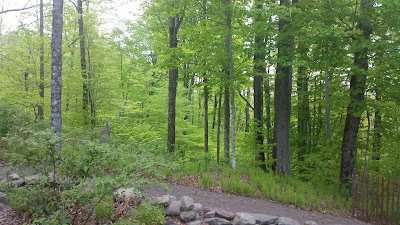

















 Some of you might remember David Harrison from the New Jersey Annual Summer Conference. He was the keynote speaker in 2010 and also did an Intensive and a number of workshops to help our members.
Some of you might remember David Harrison from the New Jersey Annual Summer Conference. He was the keynote speaker in 2010 and also did an Intensive and a number of workshops to help our members. 






















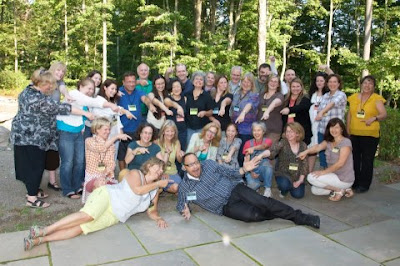
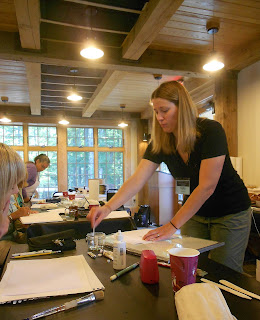







 A while back I asked Leslie Zampetti to write an article that could help writers and illustrators apply for grants. Today Leslie got the job done. I am hoping that it will help you tackle the opportunity that grants provide.
A while back I asked Leslie Zampetti to write an article that could help writers and illustrators apply for grants. Today Leslie got the job done. I am hoping that it will help you tackle the opportunity that grants provide. 







Thank YOU for your presentation during the workshop. I haven't relistened to the audio or reread my notes, but the workshop has helped kickstart my writing for the year. I also read some more in your book, Anatomy of Nonfiction, and just wrote 10 different opening sentences for a new manuscript.
It was a pleasure meeting you, Patricia. Thanks for reading my stuff.